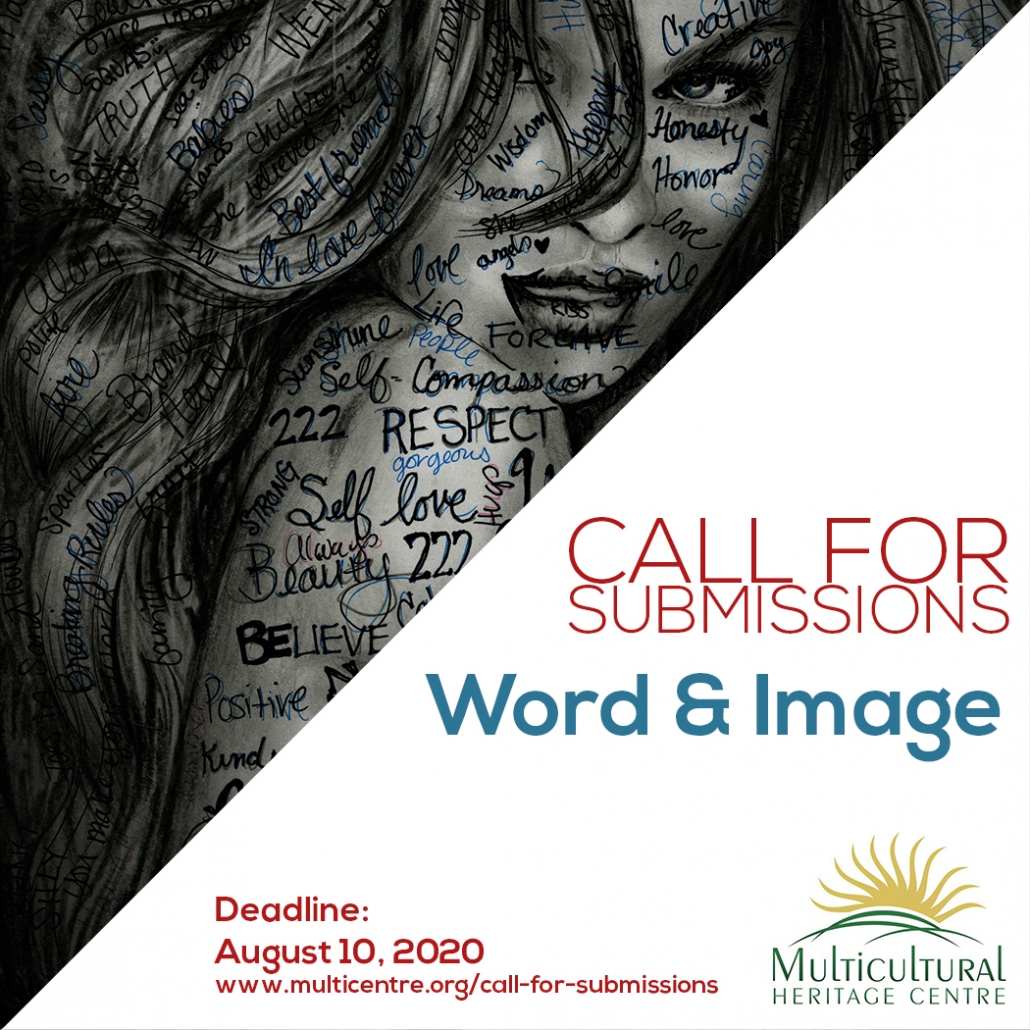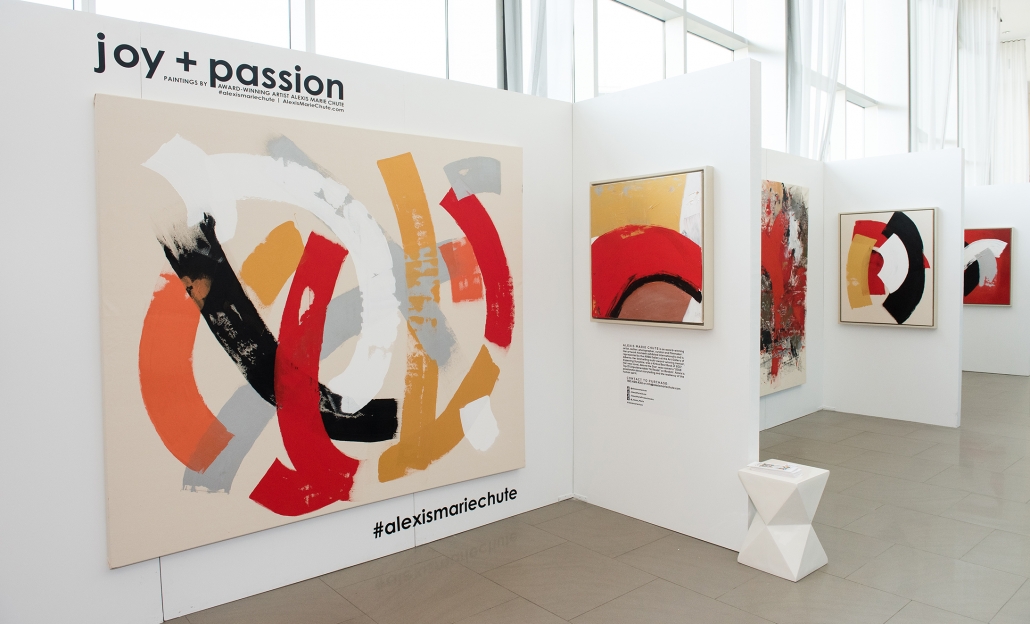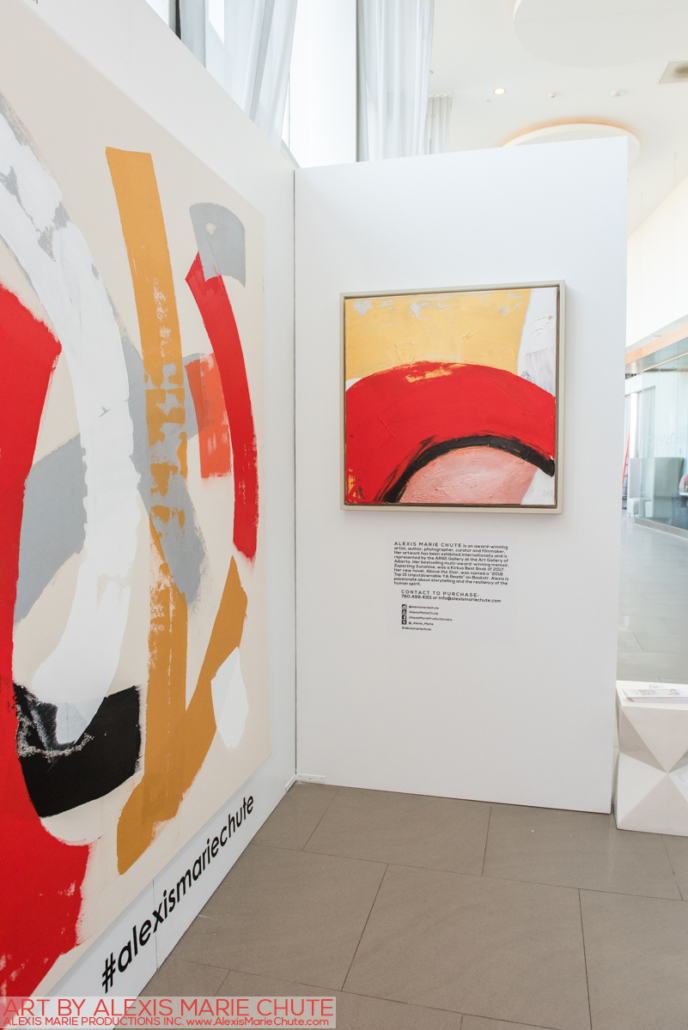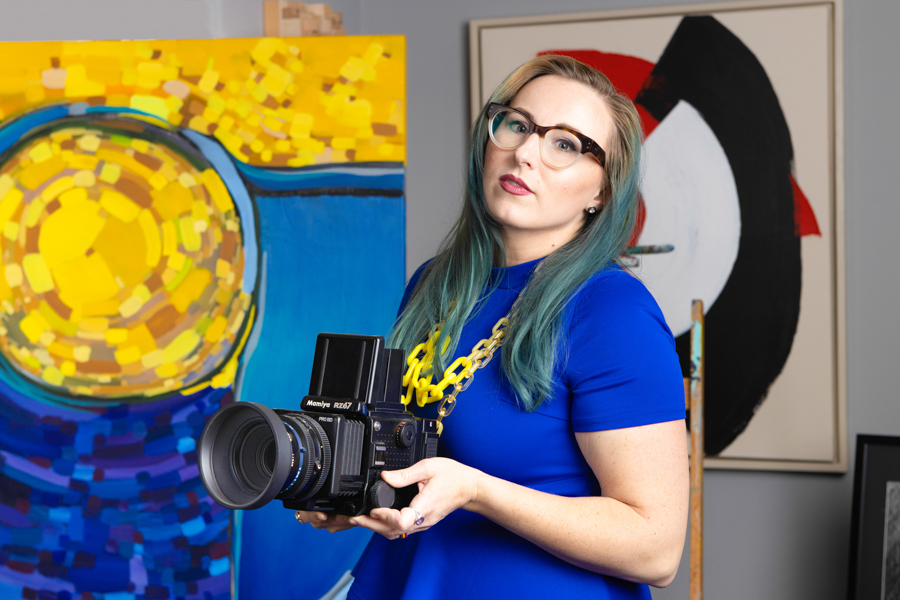Artsy Mondays
Welcome to Artsy Mondays! Yes, it is Monday. I know. I know. I have a hard time remembering what day it is too.
COVID-19 has created a new way of life and part of that – for me at least – is the blurring of days. I’m thankful for my work as an art curator, which has defined the last four months in incremental chunks based on the exhibits I was launching or promoting during that time.
One of the places I curate is the Multicultural Heritage Centre in Stony Plain, Alberta. I am honored to welcome the Centre’s fearless Executive Director, Melissa Hartley, to the blog today. When I read her essay, which I share below, it moved me deeply. I have a family member and also an adult friend with autism. Melissa’s essay helped me understand the autism and art connection in a new way. I hope you enjoy reading it. Please share it with your community.
Artsy Monday Essay Feature
by Melissa Hartley
– ART & AUTISM –
To have autism is often to be surprised by life. I am amused by my child’s awe at quotidian things—colorful beads, playdough, a bubble bath, the visible tentacles on a plate of calamari. I’m envious of his ability to attain something I often can’t: a state of transcendence induced by art. That might sound like an overstatement, but most adults I see in museums today can’t go seven seconds without reaching for their cell phones. Every kid is weird in his or her own way, those with autism maybe even more so. He is much more so. He lies on the floor and looks at exhibitions for long periods of time. He immerses himself. He’s an aesthete.

Melissa Hartley’s son Joseph looking at art while laying on the floor.
Along with instruction in tooth brushing or washing dishes, parents hope to pass along their passions, their politics, and their taste to their children. I want to pass on to my son a love of books, music, and art. I accept that this is partly about the gratification of my own ego, but it’s also one of the only ways I know of making a rich life. That’s what we all want for our progeny. I have read to him since he was in utero, I played the music I wanted him to like, (Eminem, Chopin, Nina Simone, Amy Winehouse and Tchaikovsky); and have toted him around to art museums his entire life. I am happy now as Managing Director of the Multicultural Heritage Centre that we can come alone after hours and he can lie on the floor and see art at his angle and in his way, and in his own time.
Of course, your kids might reject what you offer them. Good boy that he is, he humors me. He loves art. Art, in many of its forms, seems to move him in some way. I have come to realize that visual culture: how we see, what we see, and what we make of it, is forever changing, I realized that visiting museums with my child has changed how I see art.
Of course, autism has affected most aspects of my life. Sometimes this change is profound. Sometimes it is simply a matter of logistics, like eating in restaurants less frequently and sleeping less. Where once I might have spent hours in a museum, I now spend minutes. But that itself is a profound change—a mode of parental efficiency, like folding laundry while also reading a bedtime story, which becomes a different way of seeing. The imperative to spend less time engaged with art, means I judge more quickly which piece in a gallery to which I give my attention. Much as I accept that some mornings, I can’t make the beds and breakfast, I accept that I can’t look at everything in an exhibition. It has been helpful to learn that engagement with art doesn’t necessitate engaging with every piece of it—that just as my child gets tired, so, too, do my eyes.
I think it was Berger who said, “The child looks and recognizes before it can speak”. He has no language, but Art moves him in unspeakable ways. Unlike me, my child is considerably more engaged by the representative. My taste runs much more toward realism. I need to know the intent, I labour over the artist statement for meaning. I recently recall that “The Buffalo Corral” by Heather Shillinglaw was a big hit with him. He could lie inside the panels and be surrounded by art and color and texture, the scale, the sheer variety of visual stimulus. Encountering such work feels like a process to experience. He was enthralled. He feels art.
Art is a private matter. I only want him to understand that art is a question being asked of us, that there is no correct response, and that anyone can answer.
Please come visit The Multicultural Public Art Gallery, open winter hours 10-4 Tues-Sat. If you would like special accommodation to come after hours, please call me Melissa Hartley, Managing Director 780-963-2777.

“Buffalo Corral” is a colourful look at Metis History in Western Canada – especially in Alberta, by Metis artist Heather Shillinglaw.
Heather Shillinglaw
“Buffalo Corral”
This installation artwork called ‘Buffalo Corral’ is by Metis artist Heather Shillinglaw. The panorama image of an industrial landscape is created by interconnected doors to form a corral within the gallery, inside this corral the artist has rendered an alternative forest landscape populated by Metis and Cree individuals whom have influenced Heather and her creative process. This complex personal narrative portrayed within the corral is starkly juxtaposed against the polluted environment which surrounds the forest oasis, asking viewers to consider the impact we have on history and on our environment.

Artwork by Heather Shillinglaw at the Multicultural Heritage Centre

Metis artist Heather Shillinglaw poses with her “Buffalo Corral” exhibit on display at the the Multicultural Centre in Stony Plain, Alberta March 2017.

Detail from “Buffalo Corral” by Heather Shillinglaw.
Read more about Heather Shillinglaw’s art at the Multicultural Heritage Center on Alberta Native News by clicking here.
 IMAGE CREDIT: Heather Shillinglaw
IMAGE CREDIT: Heather Shillinglaw
Artists Statement
Buffalo Corral is a panorama made out of doors with 360-degree perspective of landmark our industrial refinery row 1850’s translated in a my own romantic perspective of using beadwork and my research of historical painters that painted the Metis, located in the Museum de Beau Arts, Ontario Gallery of Art and the Chicago Institute. The time period of the Romantic era the artist of the day I studied in galleries Paris, and Germany and also the first Panorama in Austria. The drama in the awe of nature the romantics translated in many mediums I aspire by collaging metis traditions in beadwork based on my own interpretation of beading techniques then I inspired by the historical paintings to modernize the Metis and Cree heroes today Metis community they are poets, painters, politicians and writers, historians, scholars and our youth with my family.

ATTENTION ARTISTS!
OPEN CALL
Word-and-Image: Creative Crossovers
September 16 to November 4, 2020
Books are not only for words and canvases not only for paint. Experience how words and visual art collide to create innovative creative crossovers that touch us on multiple levels. Relationships between words, art, and meaning are explored.
Details and Application
Important Dates:
Apply by Monday, August 10, 2020.
Acceptance confirmation by Monday, August 24, 2020.
Exhibition dates: September 16 – November 4, 2020.

Stay tuned for all my “calls for submissions” for artwork.
Subscribe to my e-newsletter to have these opportunities sent right to you.
ABOUT THE TRILOGY
The 8th Island Trilogy includes Above the Star, Below the Moon, and Inside the Sun. Over the three books, we follow the adventures of a quirky family, the Wellsleys. The main characters are frumpy senior citizen Archie, his daughter-in-law, Tessa, and his ill fourteen-year-old granddaughter Ella.
Archie, searching for his missing son, accidentally transports his family—and a cruise ship full of people—to a magical planet. There, they uncover the truth: all worlds are dying. Yet hope is not lost. A way to restore all that will soon be destroyed is revealed, along with the realization that Ella will play a role no one could have imagined—especially not her.
On the mysterious island of Jarr-Wya, many races of creatures battle for dominion and magic lurks around every corner. When the world falls dark, that is when bravery must shine the brightest, and the Wellsleys will reveal the strength they never knew they possessed—as well as the power of love to save the day.












